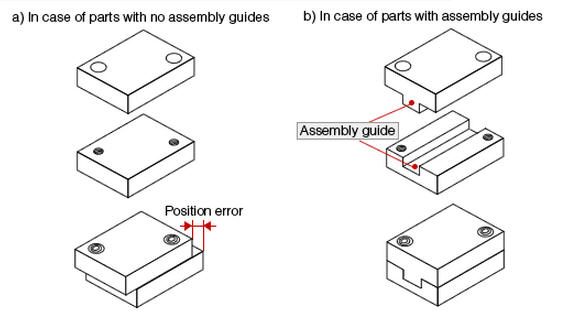For long time I wanted to writte a post about design for manufacturing in China (also called DFM) because it is very applicable to my daily activity of designing, developping and manufacturing new products in China.
It is particularly applicable because it may directly influence the quality of a production. This is where quality, design, and manufacturing are linked all together (and this is the reaso why the name of this blog is Quality Manufacturing 🙂 )
According to six sigma, design has a huge impact on quality manufacturing (it is stated that 80% of quality issue during mass production are due to design) and it is particularly true in China because quite often the productions are still human made.
What is Design For Manufacturing (DFM)
Design For Manufacturing is a set of tools used to design product aiming to be carried in mass production, so those tools are targeting mass production optimization. In short and in casual speech, design for manufacturing activity is related to optimization and adaptation of product design in order to reduce cost, time, and ressources during manufacturing and mass production.
This is normally an activity which takes place during the engineering phase after the base of the engineering has been achieved. Some engineers with experience about DFM would implement it at the earliest stage of the engineering and would not wait the last stage of the engineering to start optimizing their designs.
Typically, an engineer could start optimizing his engineering work taking in consideraiton manufacturing process has soon as the basic functionality from product requirement have been achieved by th design. This is what we do in our product development company in China when we perform industrial design for china manufacturing, mechanical engineering, or even electronic engineering service (by optimizing pcb shape for example)
Why Design for Manufacturing in China is usefull
The goal is to design a product that can be easily and economically manufactured. The importance of designing for manufacturing is underlined by the fact that about 70% of manufacturing costs of a product (cost of materials, processing, and assembly) are determined by design decisions, with production decisions (such as process planning or machine tool selection) responsible for only 20%.
The great benefit of Design For Manufacturing is particularly to reduce cost of a product during mass producting, reduce mistake by operators, diminishing time to produce by removing useless extra activity and designing product or some of their sub-parts adequately to those optimization guidelines.
So, when you consider china mass production, where 10 000+ pieces are produced and that you take consider that this tiny 0.5 USD of extra time you spent for each product because you didn’t design it well from the beginning, this tiny 0.5 USD become already 5000 USD of waste.
How Design for Manufacturing works
Typically, after a first base design have been done by the engineer, he would start thinking about optimization to comply with design for manufacturing without compromising the product specification and client requirement.
The heart of any design for manufacturing system is a group of design principles or guidelines that are structured to help the designer reduce the cost and difficulty of manufacturing an item.
There are few guidelines stated for Design For Manufacturing.
A few of them are indicated below:
A./ Reduce the total number of parts
The reduction of the number of parts in a product is probably the best opportunity for reducing manufacturing costs. Less parts implies less purchases, inventory, handling, processing time, development time, equipment, engineering time, assembly difficulty, service inspection, testing, etc. In general, it reduces the level of intensity of all activities related to the product during its entire life.
B./Develop a modular design
The use of modules in product design simplifies manufacturing activities such as inspection, testing, assembly, purchasing, redesign, maintenance, service, and so on
C./Use of standard components
Standard components are less expensive than custom-made items. The high availability of these components reduces product lead times. Also, their reliability factors are well ascertained
E./Design parts to be multi-functional
Multi-functional parts reduce the total number of parts in a design, thus, obtaining the benefits given in rule 1
F./Design parts for multi-use
In a manufacturing firm, different products can share parts that have been designed for multi-use. These parts can have the same or different functions when used in different products
G./Design for ease of fabrication
Select the optimum combination between the material and fabrication process to minimize the overall manufacturing cost.
H./Avoid separate fasteners
The use of fasteners increases the cost of manufacturing a part due to the handling and feeding operations that have to be performed. Besides the high cost of the equipment required for them, these operations are not 100% successful, so they contribute to reducing the overall manufacturing efficiency.
I./Minimize assembly directions
All parts should be assembled from one direction. If possible, the best way to add parts is from above, in a vertical direction, parallel to the gravitational direction (downward)
J./Maximize compliance
Errors can occur during insertion operations due to variations in part dimensions or on the accuracy of the positioning device used. This faulty behavior can cause damage to the part and/or to the equipment. For this reason, it is necessary to include compliance in the part design and in the assembly process.
K./Minimize handling
Handling consists of positioning, orienting, and fixing a part or component. To facilitate orientation, symmetrical parts should be used when ever possible. If it is not possible, then the asymmetry must be exaggerated to avoid failures.
I wil illustrate in another post some examples about how DFM and DFA can be implemented in China

Leave a Reply